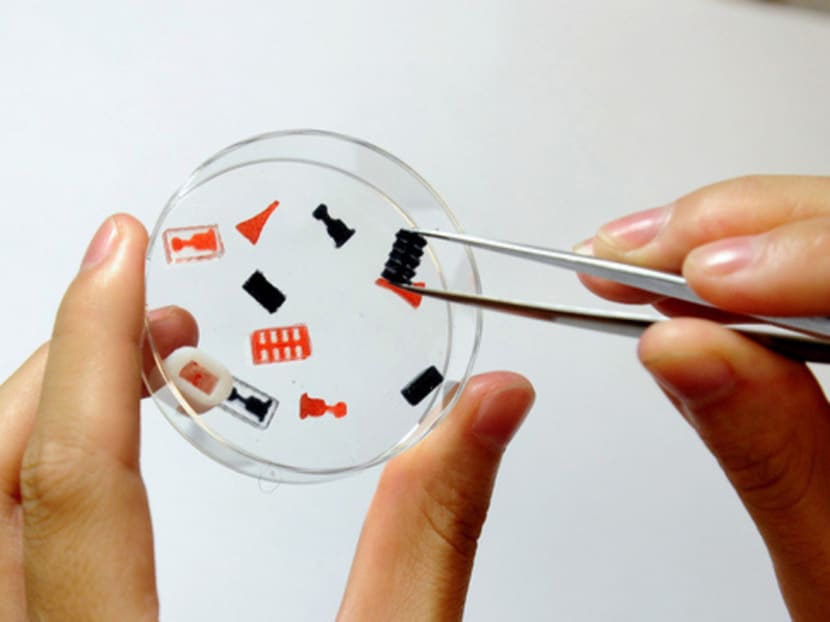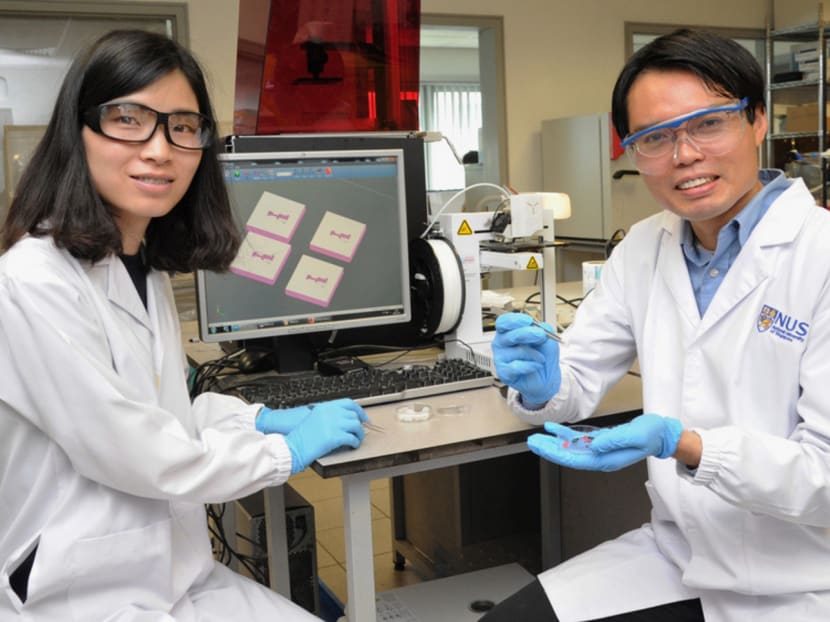NUS develops 3D-printed customised tablets that release drugs at different rates
SINGAPORE — Patients with multiple medical conditions who need to take multiple tablets every day could soon be able to pop one tablet and be done with it.


SINGAPORE — Patients with multiple medical conditions who need to take multiple tablets every day could soon be able to pop one tablet and be done with it.
While combining drugs into one tablet is not new, National University of Singapore (NUS) researchers have found a way to fully customise tablets capable of releasing different drugs at different rates throughout the day, such as for cancer.
Talks are ongoing with multinational corporations to offer these fully customised tablets to patients, with one of the researchers, Assistant Professor Soh Siow Ling, noting that since these drugs are produced by a 3D printer that costs about S$2,000, a neighbourhood clinic could also offer this service.
Asst Prof Soh, an NUS chemical and biomolecular engineering professor, developed the new method of medicine tablet fabrication together with PhD student Sun Yajuan. The duo have filed a patent for the fabrication method.
Speaking at a press conference yesterday, Asst Prof Soh noted that currently, pills can release drugs at certain specific rates, but the way they are released is not fully customised. The duo’s method allows for drugs to be released according to any desired profile.
The way that drugs are released into the body is important for certain illnesses, Asst Prof Soh explained.
For example, arthritis medication taken in the morning releases a large initial dose to eliminate morning pain, followed by smaller doses to keep the pain from recurring.
As the pill dissolves in the body, it grows smaller and releases the drug at a slower rate, he said. However, other drugs may need to be released in the body at an increasing rate, as the body develops tolerance over time; or in pulsating rhythms to match cycles in the body, such as the release of hormones.
With his team’s method, pills can be made with customised combinations of drugs released in customised profiles, at customised dosages and durations.
The customised pill will contain the drugs wrapped in a dissolvable polymer box. The box is, in turn, encased in a biodegradable polymer container that dissolves slower than the rest of the pill, and opens at only one end, limiting the drug release to only one direction.
In a pill of 0.5cm, more than 10 drugs of 0.3mm each can fit, said Asst Prof Soh.
The drugs are moulded in a specific way that determines how they are released. For example, a mountain-shaped drug will have a small initial dose that gradually increases as the pill dissolves.
“For a long time, personalised tablets have been a mere concept as they were far too complex or expensive to be realised. This new tablet fabrication method is a game changer — it is technically simple, relatively inexpensive and versatile,” said Asst Prof Soh.
If the method is further developed, researchers hope that it can be used to customise pills that can be mass-produced or created on-demand, at neighbourhood clinics, drug stores and hospitals using just commercially available 3D printers.
In comparison, traditional 3D-printed drug tablets — in which the powder is spread layer-by-layer — requires custom-made 3D printers and complex models and algorithms to create desired release profiles.
Asst Prof Soh admitted that he was surprised that their simple idea had come this far. Apart from exploring commercial possibilities, he and Ms Sun are also looking into developing the right combinations for specific drugs and illnesses.






